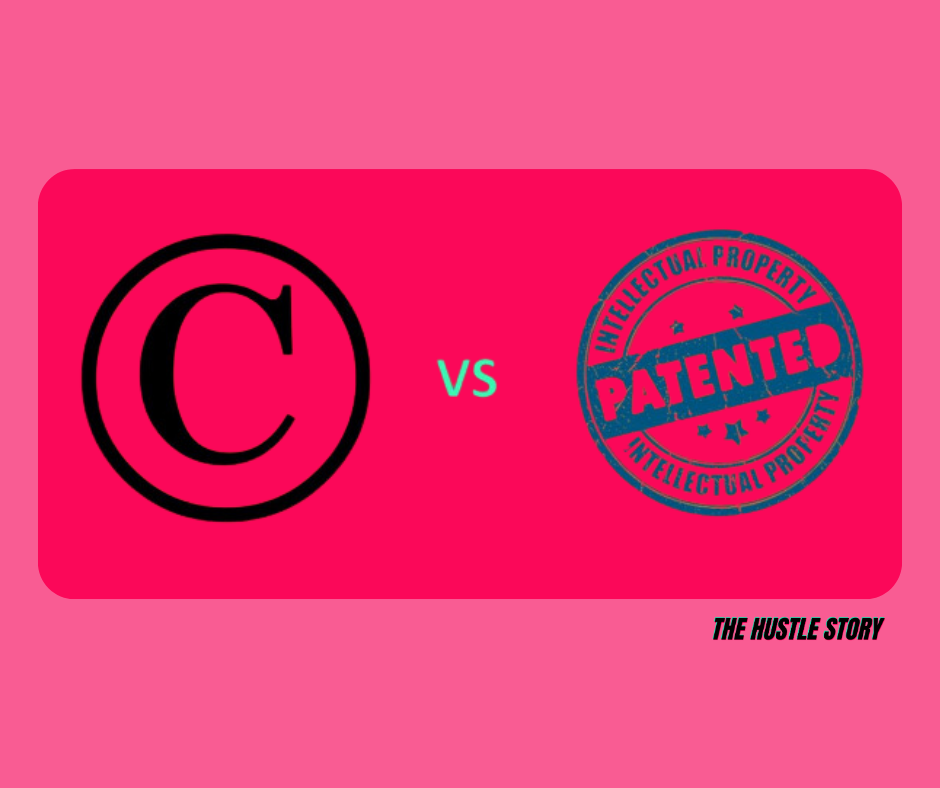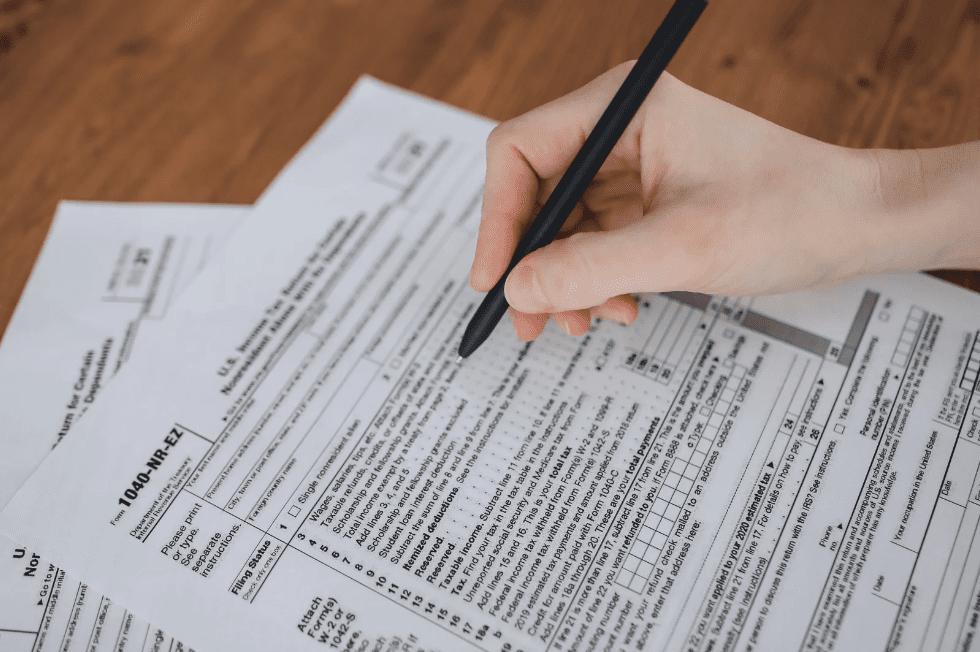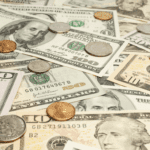So, you’ve got a brilliant idea, a groundbreaking invention, or a unique product that’s ready to change the world. Now, you’re probably wondering, “How to patent a product?”
- Key Takeaways
- What Is A Patent?
- Types Of Patent
- Importance Of Product Patent
- Steps On How To Patent A Product
- How To Patent An Idea For Free
- How To Get A Patent On A Design
- When You Shouldn’t Patent A Product
- Patent Vs. Copyright
- What Are Google Patents?
- Real-life Examples Of Patent
- Investment Required To Patent A Product
- Why Is Patenting A Product Worth It?
- FAQs (Frequently Asked Questions) On How To Patent A Product
- Final Thoughts On How To Patent A Product
Well, you’ve come to the right place for answers.
We’ll walk you through the essential steps and considerations for protecting your intellectual property and bringing your innovation to life.
Whether you’re a seasoned investor or a newbie to the patent game, we’ll make sure you understand the ins and outs of the process. How to patent a product – that’s what we’re here to uncover together!
Key Takeaways
- Choose The Patent: Determine the type of patent that best suits your needs.
- Record: Record your invention’s existence from its earliest stages.
- Describe: Describe your invention to the authorities.
- Cost Of Patent: The price of a patent starts around $5,000 and can increase to $20,000 for more complex inventions.
- Submit: You can submit your application online through EFS-Web (the USPTO’s electronic filing system). The examiner will conduct a thorough assessment.
- Notice of Allowance: If the examiner evaluates that your application meets the necessary criteria, you’ll receive a Notice of Allowance from the USPTO. Then, you’ll pay an issue fee and a publication fee.
- Patent Approval: It takes less than a year to over three years. This timeline depends on your chosen strategies for filing and managing your patent application.
- Validity: The validity of a patent lasts for 20 years, starting from the official submission date of the patent application.
What Is A Patent?
In simple words, a patent is a safety that is provided to your innovations. In other words, a patent is a formal paper that gives an inventor the sole privilege to produce, utilize, and sell their creation for a specific duration that spans about two decades.
Patents are sanctioned for fresh inventions or revelations, like methods, devices, items, or particular categories of flora. This safeguard is sanctioned by a governmental body for a specific duration, usually around 20 years from filing the patent application.
If you successfully patent a product, the inventor needs to provide a precise explanation of the creation that includes its functionality and the factors that set it apart as fresh and inventive compared to existing technologies.
This course of action needs thorough investigation, meticulous documentation, and, frequently, the guidance of legal experts well-versed in patent law.
Now, let us look at the different types of patents in the next section.
Types Of Patent
Let me tell you there are three types of patents. Here are they:
Design patents are provided to individuals who create a fresh, unique, ornamental design for an article of production. It involves details concerning items like apparel, furnishings, or items for consumers.
Utility patents offer safeguards to individuals who devise novel practical processes, machines, articles of production, or compositions of matter, as well as any inventive improvements. This involves innovations in the conventional sense, such as new devices, gadgets, materials, and so on.
Plant patents are essential to those engaged in agricultural or horticultural fields and concentrate on upholding distinctive traits of newly developed plants.
Now, let us look at the importance of product patents in the next section.
Importance Of Product Patent
A product patent plays a significant role in protecting the intellectual property of inventors & companies. Here are the key points that highlight its importance:
- Patents stimulate innovation by presenting inventors & businesses with an opportunity to recover their research, development, and commercialization investments.
- If you have a product patent, it can stop others from manufacturing similar items and help you establish a strong presence within the market.
- If you hold patents, you can license your patented technology to other parties.
- A strong portfolio of patents can enhance your company’s appeal to investors and potential collaborators.
- Patents can strategically obstruct competitors, form cross-licensing agreements, or help in negotiating partnerships.
- If you file patents internationally, it offers protection across multiple countries.
Now, it’s time to disclose the steps on how to patent a product.
Steps On How To Patent A Product
There are some steps on how to patent a product. Here are they:
1. Figure out whether obtaining a patent is suitable
First things first, choose patent protection if you intend to protect an innovation, a tangible product, or a design.
2. Ascertain whether your invention qualifies for a patent
If you want an invention to be eligible for a patent, it must meet the following criteria:
- As per Section 101 of the US Code, patentable subject matter includes various categories such as “process, machine, manufacture, or composition of matter,” including any novel and valuable improvements.
- A patent’s utility can be readily demonstrated by showcasing its practical functionality.
- An invention loses novelty if the public knows it before the applicant’s patent filing.
- An invention is deemed non-obvious if its creation demands expertise beyond an average person’s.
3. Perform a patent search
You need to ensure the uniqueness of your invention by examining the presence of similar existing patents. You can conduct this search using the USPTO online database.
4. Decide the type of patent that suits your needs
Now, answer these questions –
Are you in the process of applying for a utility patent, or are you considering a design or a plant patent instead?
5. Maintain records
You need to create a record of your invention’s existence right from the earliest stages. A dated journal, voice recordings, sketches, pictures, and videos can all serve as lasting records of your invention journey. Also, digital files with timestamps can be beneficial in establishing your claim to the invention.
6. Construct a prototype
Now, you need to provide the authorities with a description of the invention you intend to patent.
7. Be prepared for expenses
The process of obtaining a patent is approximately $5,000 and can escalate to around $20,000 for more intricate inventions. This cost includes government fees and valuable assistance expenses as well.
8. Get ready to submit your application
Take the time to go over the USPTO’s list of different fees associated with patent registration, along with the schedules for application examination. Once you understand your application’s intricacies, consider engaging a patent attorney.
9. Lodge your application
You can use EFS-Web (the USPTO’s electronic filing system) to submit your patent application online. Your application needs all the necessary components and the relevant fee.
Now, you’re free to file either a standard or provisional patent application. Choosing a Provisional Patent Application grants you the ability to assert “patent pending” status for your invention.
It’s generally less intricate than filing a Regular Patent Application, which involves the complete patent examination procedure.
10. Collaborate with your patent examiner
Once your application is completed, the patent office will notify you via mail regarding the missing components. Depending on the nature of the omission, you will get a specific timeframe to update your application.
If the required adjustments are not made, your application will be declined and returned to you. However, if your application is deemed complete and in order, it will be further assigned to an examiner. This examiner will thoroughly assess it to determine whether it aligns with the legal prerequisites for patentability.
You can revise your application to identify instances where legal standards still need to be met.
If your application faces two rejections, you can appeal the examiner’s decision to the Patent Trial and Appeal Board.
11. Obtain approval & settle remaining fees
If the examiner concludes that your application meets the necessary criteria, you’ll get a Notice of Allowance from the USPTO. Then, you’ll be required to pay an issue fee and potentially a publication fee before the patent is formally granted.
Now, you are aware of how to patent a product. Let us see how to patent an idea without any cost.
How To Patent An Idea For Free
If you want to patent an idea for free, you need to follow certain steps. Here are they:
- When it comes to the United States, you need to file patents with the U.S. Patent and Trademark Office.
- As you move forward with filing a patent application, remember that the size of the applicant determines the fees charged by the USPTO. The larger your business, the higher the associated costs.
- The journey of inventing involves two pivotal phases: conceiving and translating the invention into reality. Demonstrate how existing machinery can be merged, along with exploring alternative approaches. This can typically be achieved through a schematic, drawing, or photograph.
- Remember that you need to document dates and maintain records of them.
- You should maintain strict confidentiality around your ideas. All pertinent and non-pertinent details should remain undisclosed, as any exposed information can potentially jeopardize your patent application.
- Then, conduct thorough research into patents within your specific field or industry. This ensures that your patent safeguards all aspects of your invention under exclusive rights.
- You can independently file a patent application for your invention or enlist the services of patent attorneys to handle the filing on your behalf.
Now, you are aware of how to patent a product and patent an idea without any cost. Let us look at how to get a patent on your design.
How To Get A Patent On A Design
You can get a patent on a design by following certain steps. Here are those steps:
- First, you need to assess whether it’s viable to enlist the services of a design patent attorney. If it is consuming a lot of time to conduct comprehensive research on design patents or prepare your application, I suggest seeking legal assistance. Make sure to execute a power of attorney document as well.
- Undertake a patent search to ascertain the presence of a similar design that may already exist. Then, you need to incorporate a discussion of your research findings into your application.
- Surrender a Design Patent Application to the USPTO. While you won’t find pre-made application forms for design patents, you can craft your application. You need to review a few already-issued patent designs before submitting your application. Doing this will provide you with a solid idea of what format yours should follow.
- Upon receiving your application, the USPTO will notify you of the filing date. If your application gains approval, a patent examiner can guide you through the left steps to secure your patent.
- When you’re communicating with a patent examiner, you need to make sure you provide essential details such as your application number, group art unit number, filing date, examiner’s name, and the title of your invention.
- If your application faces rejection, you have a limited timeframe to respond. In the event of non-approval, you can either amend the contents or present arguments in favor of its merits. If a second or final rejection is received, you can appeal the decision to the Board of Patent Appeals and Inferences.
Now, you are aware of how to patent a product, patent an idea without any cost, and get a patent on your design.
When You Shouldn’t Patent A Product
There are a few reasons why you shouldn’t patent your product. Here are they:
- Getting a patent might occasionally postpone the launch and promotion of your product, particularly when you’re attempting a do-it-yourself patent application. If your invention’s relevance could diminish over time or it’s expected to be quickly replaced by a superior alternative, you might not have the privilege of waiting.
- The expense of securing a patent can vary based on the invention. It amounts to somewhere around tens of thousands of dollars that cover search and assessment costs, professional fees of engineers, designers, and attorneys, and filing fees imposed by the patent office.
- Rules and regulations are continuously evolving, which makes it challenging to remain current with the most recent protocols and procedures for patent applications.
Now, you’re aware of how to patent a product. Let us see the difference between patent and copyright in the next section.
Patent Vs. Copyright

A patent is a government-issued legal entitlement bestowed upon inventors. This entitlement furnishes the patent holder with exclusive privileges to produce, utilize, vend, and circulate a novel and beneficial invention. Typically, these rights persist for around 20 years from the filing date.
The scope of patents includes inventions, processes, machinery, products, and specific categories of designs. If you want a patent, you need to go through an application procedure and stimulate innovation by granting inventors a time-limited monopoly over their creation.
On the other hand, copyright represents a safeguard provided to original works of authorship, including literary, artistic, musical, or dramatic compositions. Copyright protection is inherently conferred when a work is produced and solidified in a tangible medium, such as writing it down or recording it.
The duration of copyright protection varies, yet it generally persists for the creator’s lifetime, augmented by a designated number of years.
Patents shield inventions and groundbreaking ideas, whereas copyrights uphold imaginative manifestations.
What Are Google Patents?
Google Patents is an internet platform offered by Google to grant users entry to an extensive repository of patent records.
It permits you to conduct searches and navigate through an all-inclusive database of patents from around the globe.
Google Patents simplifies uncovering a range of patents, patent applications, and associated technical papers. This empowers researchers, inventors, and the general population to obtain valuable insights into inventions, breakthroughs, and technological progress.
You can use the Google Patents tools to explore, assess, and visually represent patent data.
Now let us see real-life examples of how to patent a product in the next section.
Real-life Examples Of Patent
Let’s see the real-life examples where products were patented:
Amazon has explored the use of drone technology for deliveries for a while, but its acquisition brought about significant changes. The company secured a patent for a versatile super drone with modular capabilities, opening up the possibility of carrying larger and heavier payloads.
In 2019, IBM secured a patent for a designed smartwatch that features an expandable display that can transform the device into both a smartphone and a tablet.
In its default setup, the smartwatch uses just one of these displays, with the others neatly tucked away within a compact compartment located within the device.
If the user desires a larger screen area, they can effortlessly slide sections out from the housing to create an expanded, wide display.
Investment Required To Patent A Product
If you want to know what expenses are incurred while patenting a product, I must tell you that it depends on various factors, such as the intricacy of the invention, the patent type, the geographic location where you’re pursuing protection, and whether you’re taking professional guidance.
Before initiating any filing to secure your patent, you need to develop an actual prototype of your invention.
The process of obtaining a patent in the United States spans 18 to 24 months. Generally, you should anticipate an investment ranging from $10,000 to $25,000 for this undertaking.
Why Is Patenting A Product Worth It?

As you know, patents play a critical role in safeguarding novel inventions. Moreover, you can protect products, designs, or processes that meet specific criteria through a patent. Typically, a patent protects your concept for approximately 20 years.
Upon receiving patent approval, you acquire exclusive rights to produce, utilize, or sell the invention.
A patent empowers you to prevent competitors from engaging in activities that violate your patent. Alternatively, you could sell the rights to use your innovation to other enterprises, potentially yielding substantial profits solely from the concept.
In case of a patent breach, you can take legal action against the infringing party and seek significant damages. However, it’s essential to recognize that legal expenses associated with pursuing a patent infringement case can be substantial.
Now, let us have a look at some FAQs on how to patent a product.
FAQs (Frequently Asked Questions) On How To Patent A Product
1. How much does it cost to patent a product?
Typically, the services of a patent attorney for a patent application can range from $8,000 to $10,000, although costs might exceed this range. You need to allocate a budget between $15,000 and $20,000 to cover the entirety of the patent journey for your invention.
2. How do I patent my own product?
You can patent your product by following these ways:
- Assess the suitability of patent protection,
- Ascertain the eligibility of your invention for patenting,
- Perform a thorough patent search,
- Identify the type of patent required,
- Prepare for the submission of your application,
- Lodge your application,
- Collaborate with your patent examiner,
- Attain approval and fulfill final fees.
3. What are the 3 types of patents?
The 3 types of patents are design, utility, and plant patent.
4. How Long Does It Take To Get A Patent?
The duration from the filing date varies, taking anywhere from less than a year to over 3 years, contingent on the strategies you opt for in filing and handling your patent application.
5. How Long Does A Patent Last?
The validity of a patent extends for 20 years, starting from the date the patent application is officially submitted.
6. How can I patent a product for free?
The Patent Pro Bono Program connects inventors with licensed patent agents or patent attorneys who generously donate their time to assist inventors at no cost. Inventors are still responsible for covering all fees mandated by the USPTO, as the participating practitioners cannot cover these expenses.
Final Thoughts On How To Patent A Product
If you secure a patent for a product, it means you have acquired legal safeguarding for a fresh and ingenious creation or item. Before you go for patenting, you need to confirm whether your product meets the prerequisites for patent eligibility. Your product needs to be original, not easily provable, and serve a practical purpose.
A product patent grants you the power to prohibit others from producing, utilizing, vending, importing, or dispersing the patented product without your consent.
Remember that the patenting procedure can be intricate, so you need to seek advice from a patent attorney to ensure accurate process navigation and optimize protection for your product.
I hope that today’s article on how to patent a product sounds helpful!



![21 Worst Shark Tank Failures And Why They Failed? [2024] 13 Shark Tank Failures](https://thehustlestory.com/wp-content/uploads/2021/11/Shark-Tank-Fails-Blog-Banner-2.jpg)


